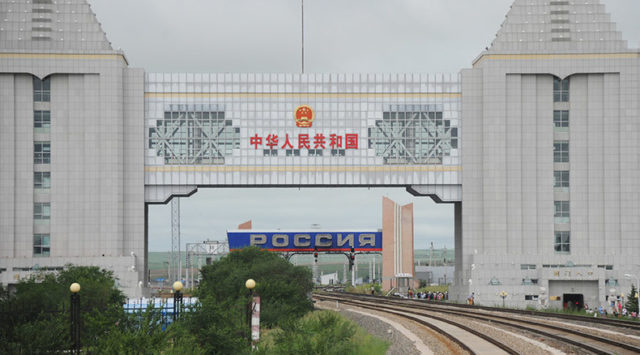
Chinese Regions to Begin Working Directly with Russian Ones
Publication: Eurasia Daily Monitor Volume: 16 Issue: 95
By:

Russians have become increasingly concerned about Chinese economic and even demographic penetration of Siberia and the Russian Far East; but in most cases, Chinese actions have been blessed by Moscow, which sees them as a source of immediate profit regardless of what the longer-term consequences may be (see China Brief, August 5, 2009). That view, however, is not shared by many Russians in that region, who feel they are being sold out by the center (Newsader.com, March 31, 2019; Windowoneurasia2.blogspot.com, April 1, 2019). But now China has taken a step that may create more serious problems for Moscow and has done so, at least so far, with Russia’s agreement: Beijing is promoting direct cooperation between Chinese regions and Russian ones, thus repeating what Moscow tried along its border with Soviet bloc countries in the 1970s and 1980s.
Earlier this month, the sixth Chinese-Russian EXPO in Harbin signaled this new policy by calling for direct cooperation between Chinese regions and Russia’s regions and republics east of the Urals. The first pairing is to be China’s Guangdong Province with the Sakha Republic of the Russian Federation (Rossyiskaya Gazeta, 1tv.ru, June 17; Stoletie.ru, June 18).
The two sides agreed to establish structures to promote expanded contacts on the sub-national level. Maksim Akimov, the Russian deputy prime minister in attendance, said in Harbin that these contacts will involve “not only trade and economic issues but humanitarian concerns as well. Contacts between people will be strengthened, friendship will be strengthened as well, and all will be well in the trade and economic sphere as a result.” Wan Qishan, his Chinese counterpart, responded in kind, specifying that Beijing wants to import more agricultural products, natural resources, and water from Russia and looks forward to having this growth reflect the needs of the regions on both sides of the border (1tv.ru, June 17).
On the surface, such steps appear anodyne enough, a logical extension of what has already been taking place; and they are still certainly under the control of the two national capitals. But there are two precedents, one from the late Soviet period and a second from the post-Soviet era, that suggest any downward moves from capital-to-capital and business relationships to inter-regional ones are fraught with peril for the weaker partner and offer the regions on both sides of the border new political possibilities.
Despite the widespread image of the Soviet border as everywhere resembling the impenetrable Berlin Wall, Moscow in fact promoted cross-border regional-level relationships with Eastern Bloc states that it felt it fully controlled by other means. Specifically, it did so all along its western border in order to undermine the independence of these countries and to give Moscow additional leverage over them from within. As long as Moscow was the dominant power, this strategy worked quite effectively. But once Moscow began to lose its position, these cross-border structures allowed for influence to pass in the opposite direction, encouraging governments in the Soviet Union republics to adopt a more independent line and thus helping to power the disintegration of the Union of Soviet Socialist Republics (USSR) (Andrea Chandler, Institutions of Isolation: Border Controls in the Soviet Union and Its Successor States, Montreal, McGill University Press, 1993).
That experience made some in Moscow leery after 1991 of accepting European projects for cross-border Euro-Regions, which the Europeans wanted as part of a common neighborhood policy and that they had used to lessen the significance of national borders within the European Union. At first, Moscow had little choice but to accept this offer from Brussels and allowed the establishment of such institutional arrangements. The Europeans brought money, and Russians saw no option but to cooperate with them. But with time and with the rise of Vladimir Putin, Moscow became increasingly suspicious that such institutions could threaten the central government’s control or even lead to independence movements along Russia’s western periphery. Consequently, the Kremlin ultimately restricted these activities or even wound them up entirely (Ku.edu, accessed June 27, 2019; Stolicaonego.ru, January 10, 2014; Russ.ru, 2015).
In the Russian Far East, China is clearly the rising power, just as the EU was relative to the Russian Federation during the 1990s. Consequently, it is almost certain that China’s influence in Russian regions will far exceed Russia’s in any of the Chinese ones. In the short term, that will give new status to the leadership of the Sakha Republic and other regions China may extend this policy to. They will travel to China, and Chinese regional and central officials will visit them more frequently, thus giving this Russian Far East republic a quasi-state status that its inhabitants want but that Moscow fears. And over time, these structures of inter-regional exchange—just like those across the western Soviet borders in the 1980s—may give additional impulse to already growing fissiparousness in the Far East and Siberia.
That does not mean that China necessarily plans to actively promote the independence of these Russian regions. Rather, it means that Beijing views the regions within the Russia Federation as elements that could potentially give it even more relative advantages over Moscow than it currently enjoys. As this process develops, however, at least some in the Russian capital are certain to be alarmed and may try to counter those trends with anti-Chinese propaganda—something that could undermine ties between the Russian government and China more generally. But the history of such cross-border region-to-region arrangements strongly suggests that they are going to have more far-reaching consequences than anything the Russian and Chinese officials meeting in Harbin were thinking about.



